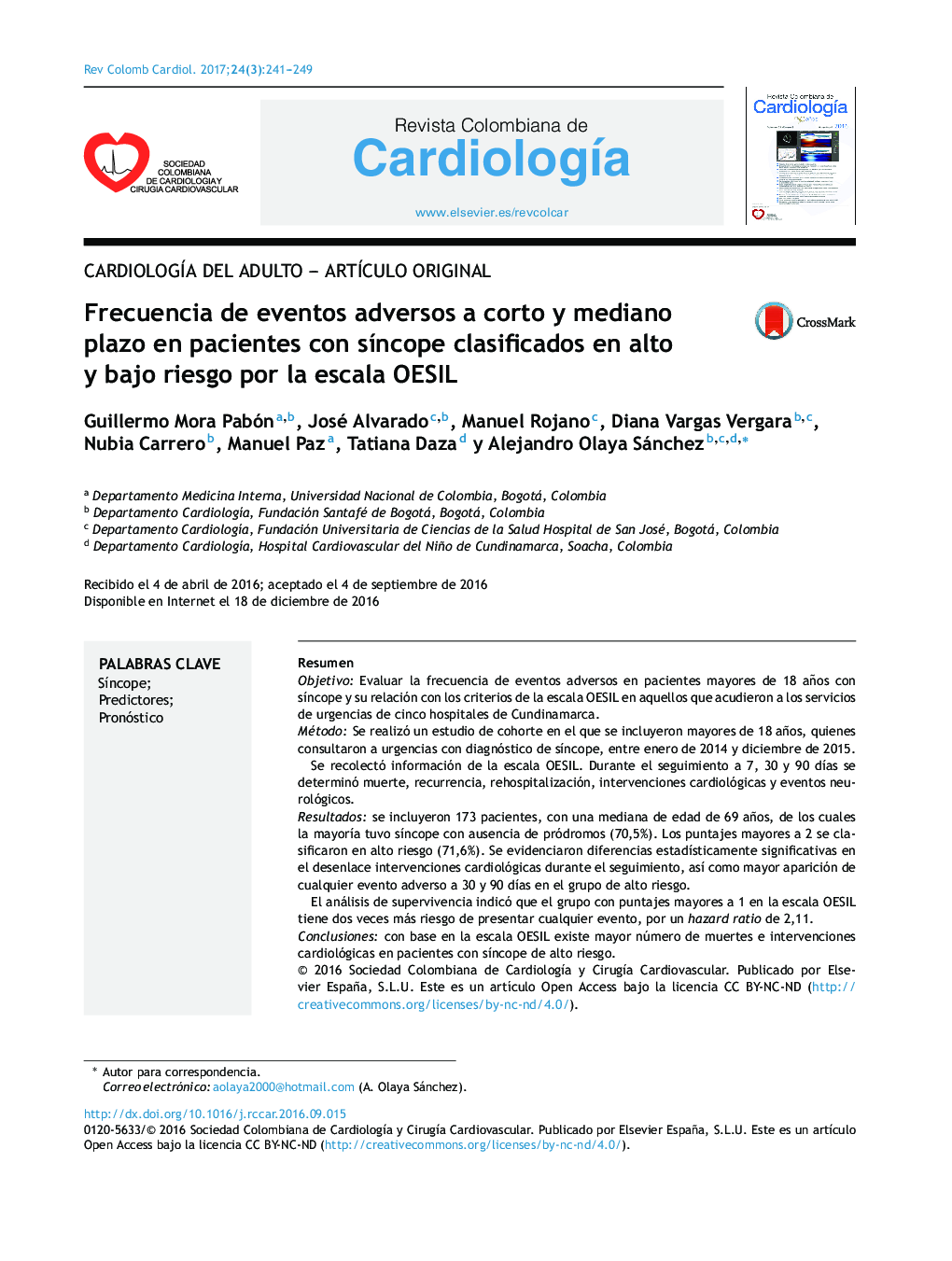| Article ID | Journal | Published Year | Pages | File Type |
|---|---|---|---|---|
| 5620380 | Revista Colombiana de Cardiología | 2017 | 9 Pages |
ResumenObjetivoEvaluar la frecuencia de eventos adversos en pacientes mayores de 18 años con sÃncope y su relación con los criterios de la escala OESIL en aquellos que acudieron a los servicios de urgencias de cinco hospitales de Cundinamarca.MétodoSe realizó un estudio de cohorte en el que se incluyeron mayores de 18 años, quienes consultaron a urgencias con diagnóstico de sÃncope, entre enero de 2014 y diciembre de 2015.Se recolectó información de la escala OESIL. Durante el seguimiento a 7, 30 y 90 dÃas se determinó muerte, recurrencia, rehospitalización, intervenciones cardiológicas y eventos neurológicos.Resultadosse incluyeron 173 pacientes, con una mediana de edad de 69 años, de los cuales la mayorÃa tuvo sÃncope con ausencia de pródromos (70,5%). Los puntajes mayores a 2 se clasificaron en alto riesgo (71,6%). Se evidenciaron diferencias estadÃsticamente significativas en el desenlace intervenciones cardiológicas durante el seguimiento, asà como mayor aparición de cualquier evento adverso a 30 y 90 dÃas en el grupo de alto riesgo.El análisis de supervivencia indicó que el grupo con puntajes mayores a 1 en la escala OESIL tiene dos veces más riesgo de presentar cualquier evento, por un hazard ratio de 2,11.Conclusionescon base en la escala OESIL existe mayor número de muertes e intervenciones cardiológicas en pacientes con sÃncope de alto riesgo.
ObjectiveTo assess the frequency of adverse events in patients over 18 years old with syncope and their relationship with criteria of the OESIL risk score in those who attended the emergency room of five hospitals in Cundinamarca.MethodA cohort study was conducted which included patients over the age of 18 years who attended the emergency room with a syncope diagnosis between January 2014 and December 2015.OESIL score information was collected. During the follow up at 7, 30 and 90 days, death, recurrence, rehospitalization, cardiological interventions and neurological events were determined.Results173 patients were included with an average age of 69 years, of whom most had syncope in the absence of prodromes (70.5%). Scores higher than 2 were classified as high risk (71.6%). Statistically significant differences were evidenced in the outcome of cardiological interventions during the follow up, as well as a higher incidence of any adverse event at 30 and 90 days within the high risk group.Survival analysis indicated that the group with scores higher than 1 in the OESIL scale are twice more likely at risk of presenting any event with a hazard ratio of 2.11.ConclusionsAccording to the OESIL score, there is a higher number of deaths and cardiological interventions in patients with high risk syncope.
